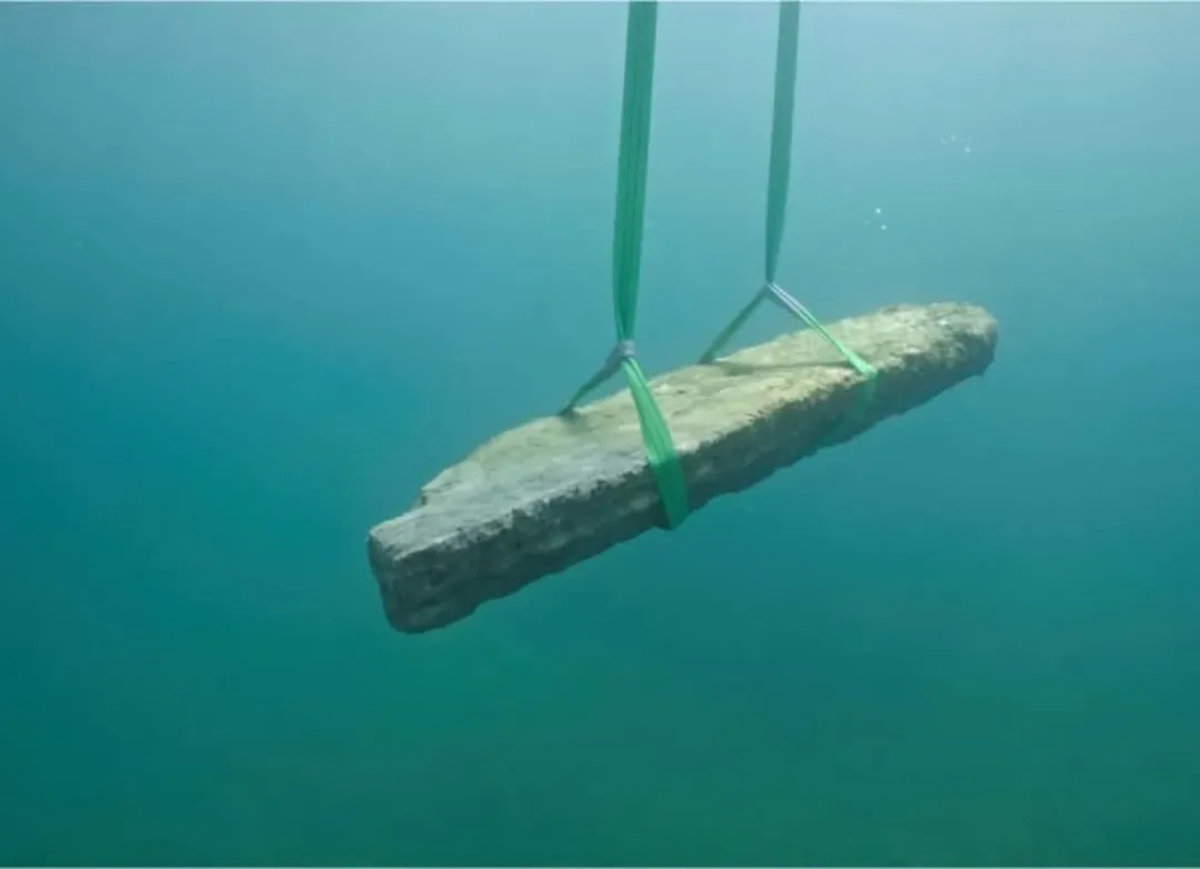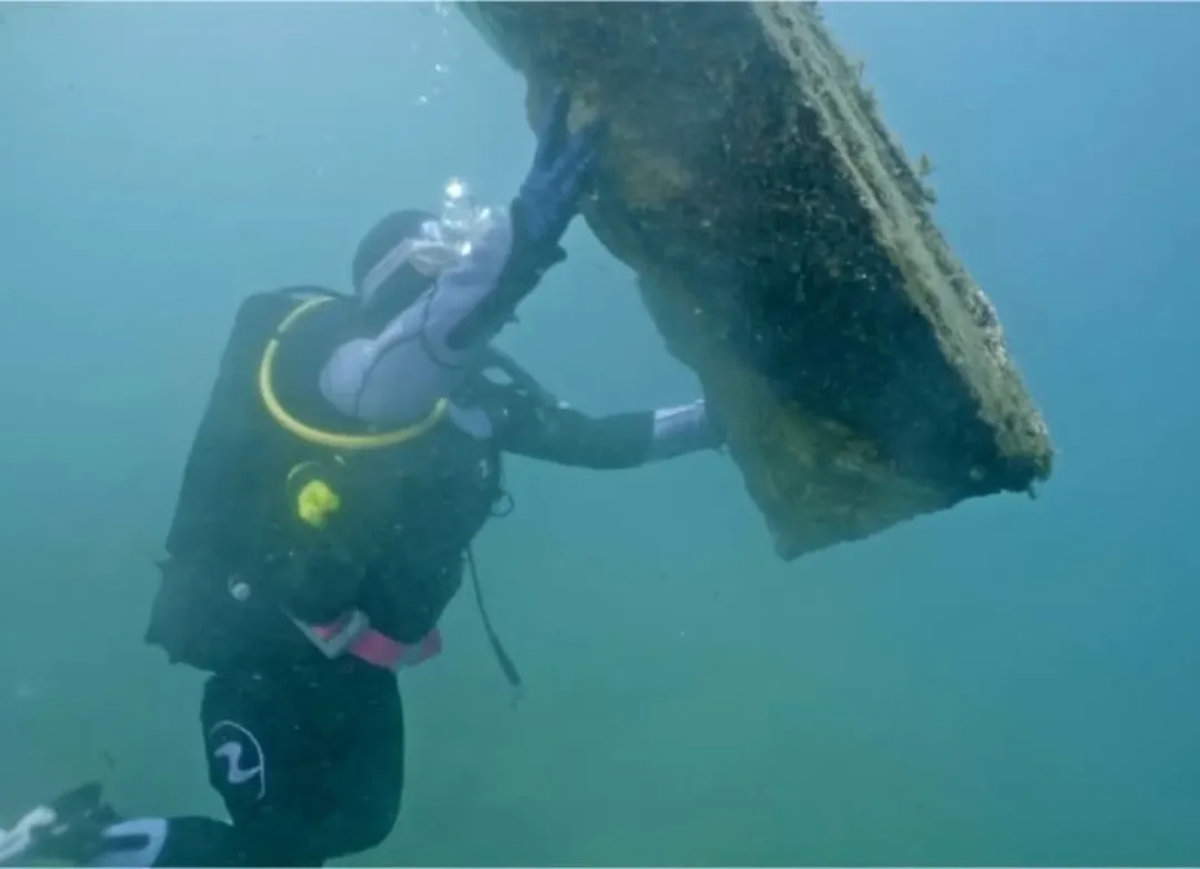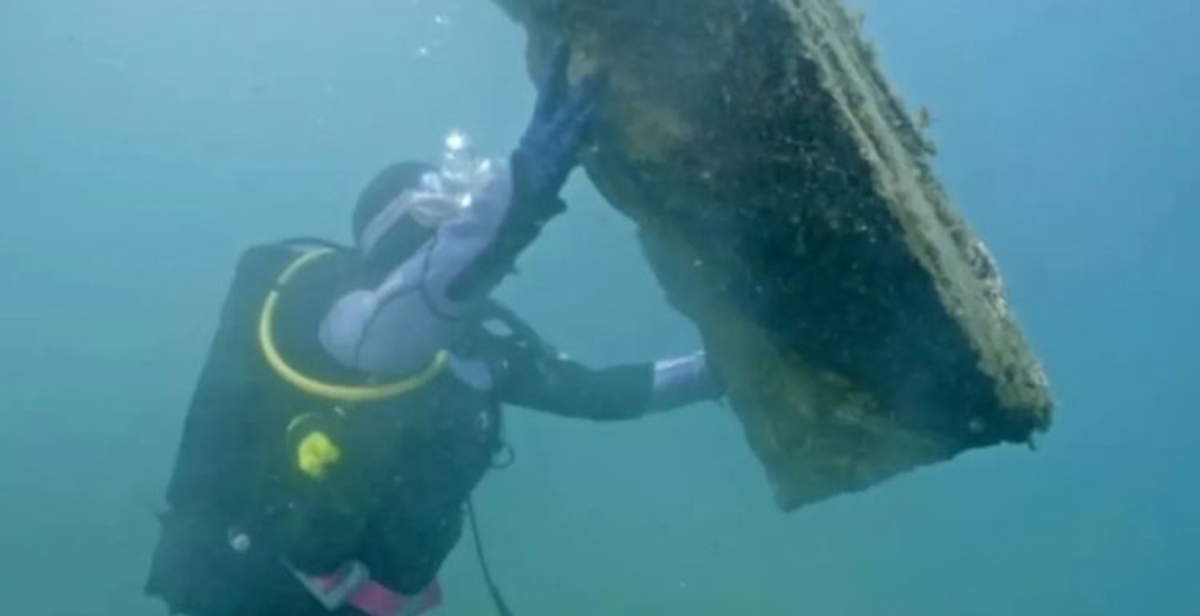An archaeological recovery operation was recently conducted in the seabed in front of the port of Miseno, in the municipality of Bacoli, in the province of Naples. The operation focused in particular near the mouth of the ancient Roman port of the colony of Misenum, base of the Classis Misenensis, the main fleet of the Roman Empire in the Tyrrhenian Sea. The operation uncovered a number of artifacts attributed to the imperial era, including alintel dating to around 2,000 years ago, according to the Naples Metropolitan Area Superintendent’s Office.
The operation is part of a program aimed at the protection and enhancement of the underwater heritage of the Phlegraean Fields, considered among the most relevant underwater archaeological poles in the entire Mediterranean area. The area involved in the recovery is configured as a stratified archaeological context, characterized by a considerable heterogeneity of the materials found. The overall extent of the site is along a stretch of about 90 meters in length, with an average width of 22 to 23 meters. The depth at which the finds are found varies from a minimum of 5 to a maximum of 9 meters below sea level. The height of the submerged archaeological stratification is about 2 meters. The activities were coordinated by the Superintendency in collaboration with the Underwater Archaeology Office directed by Simona Formola, with the involvement of the Carabinieri Underwater Police, the Carabinieri Cultural Heritage Protection Command, the Guardia di Finanza, the Coast Guard, and the Municipality of Bacoli.

“The recovery of these finds represents an achievement of extraordinary historical and scientific significance,” says Superintendent Mariano Nuzzo. “The marble fragments found testify to the richness and even symbolic importance of public complexes that characterized the entire colony. These are architectural elements that in all probability belonged to buildings representative of imperial power, closely connected to the Classis Misenensis. These finds not only enrich our knowledge of the urban landscape of the time, but also give us a vivid and tangible image of the political, social and cultural dimension of Misenum in the context of the ancient Mediterranean.”
“We have succeeded!” writes Bacoli Mayor Josi Gerardo Della Ragione on his Instagram profile. “We have recovered the first archaeological find from the sea of Miseno. It is a 2,000-year-old lintel, still clearly visible. A day full of emotions. It was among the ornaments of the public monuments of the very important Roman colony of Misenum. We bring it to the surface after a study and recovery work that we financed with great joy. And pride. We found it in a kind of storage, on the seabed of Bacoli. There where the military fleet of the Classis Misenensis used to moor. Along with many other archaeological remains that we will try to introduce you to. We will exhibit them at the Casina Vanvitelliana on Fusaro. A marvel. I thank Superintendent Mariano Nuzzo for his great sensitivity and operativeness in the protection and enhancement of the territory. I thank the official Simona Formola and the professionals of Naumacos who dived into the water to unearth the treasures of ancient Rome. I thank all the law enforcement agencies involved in a morning of great institutional synergy: Carabinieri, Guardia di Finanza, Coast Guard. And this is just the beginning. Together, we are stronger. One step at a time.”


The stretch of sea between Punta Terone and Punta Pennata is no stranger to finds of historical interest. Starting in the early 1980s of the last century, there have been numerous occasional finds that were considered of considerable importance. A systematic survey conducted in 1996 resulted in the recovery of a vast quantity of finds, including statues, bases with inscriptions, fragments of lintels and column bases. The materials recovered on that occasion are currently kept at the Archaeological Museum of the Phlegraean Fields.

According to reports from the Superintendency, the finds most likely belonged to the public buildings of the Roman colony that once overlooked the Miseno inlet. Their submergence can be attributed to bradyseism phenomena, which over the centuries have changed the ground level and caused entire architectural complexes along the Phlegrean coastline to sink. The unearthed finds will now undergo restoration and conservation work. The first step will be desalination, to be carried out in special tanks set up inside the Fusaro Bourbon Park. Once the treatment is over, the recovered objects will be displayed in a permanent exhibition set up in the spaces of the Palazzo dell’Ostrichina, a building commissioned by Ferdinand IV of Bourbon and made available by the City of Bacoli. The ultimate goal of the project is to make available again to the public a heritage that, although submerged, continues to return important evidence on the life, art and urban organization of the Campanian coastline in the imperial era.
 |
| Archaeological finds from the imperial era recovered in the depths of the Roman port of Miseno (Naples) |
Warning: the translation into English of the original Italian article was created using automatic tools. We undertake to review all articles, but we do not guarantee the total absence of inaccuracies in the translation due to the program. You can find the original by clicking on the ITA button. If you find any mistake,please contact us.